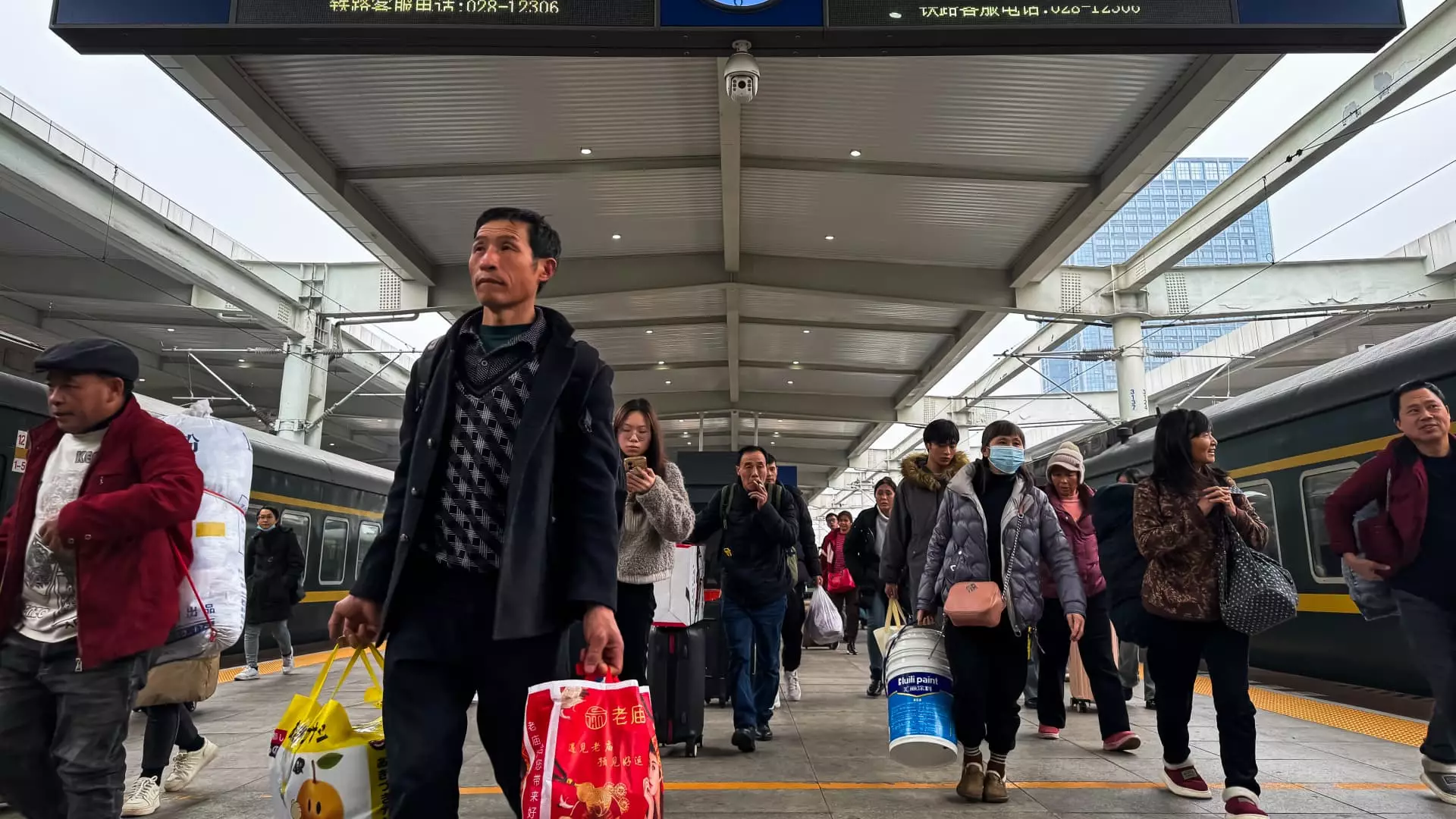China’s economic environment has become a topic of intense scrutiny as domestic and global investors keep an eye on the anticipated recovery. Despite recent assurances of support from the Chinese government, the economy has not rebounded as expected. In recent months, authorities have implemented measures such as interest rate cuts and introduced various stimulus initiatives. However, details surrounding comprehensive fiscal support are expected to remain vague until the parliamentary session occurs in March. BlackRock Investment Institute recently highlighted a critical observation regarding this uncertainty, commenting on the persistent drags on the economy and emphasizing caution due to China’s structural hurdles.
One of the pressing concerns within the Chinese economy is the declining domestic demand. Recent consumer statistics indicate an alarming trend; the Consumer Price Index (CPI) showed an increase of merely 0.5% in 2024, making it the slowest growth observed in a decade. The situation reflects a broader issue affecting consumer confidence and spending habits. Notably, the mayor of Beijing, Yin Yong, pointed out that consumer spending remains subdued, foreign investments are waning, and multiple industries are grappling with growth pressures. The outlook for inflation also seems troublesome, as authorities have set a modest target of 2% for consumer price inflation for 2025.
Despite the government’s ongoing efforts to stimulate the economy, including the launch of ultra-long bonds intended to spur consumption, the results are not immediate. Analysts like Mi Yang from JLL caution that while stimulus measures may eventually boost the economy, tangible results may take time to materialize. The ongoing pressure on the commercial property market adds yet another layer of complexity, particularly as rental prices in major cities such as Beijing have experienced significant declines.
Real Estate Challenges and Recovery Efforts
The real estate sector, historically a pillar of the Chinese economy, faces an uphill battle. Authorities have recently shifted their focus to supporting this crucial segment after years of tightening regulations aimed at curbing developers’ excessive debt. However, analysts agree that a robust recovery for the real estate market remains uncertain. According to Jeremy Zook from Fitch Ratings, the market has not yet reached a stabilizing point, and the risk of a prolonged downturn lingers.
In cities like Foshan and Guangzhou, housing inventory levels remain alarmingly high, raising concerns about the potential for further price declines. The current conditions paint a picture of an industry struggling against the dual pressures of high inventory and an incomplete construction pipeline. As policymakers work to address these challenges, confidence in the housing market’s recovery is cautiously optimistic at best.
The Impact of Trade-in Subsidies on Consumer Spending
In an attempt to stimulate consumption, the Chinese government has introduced trade-in subsidy programs, intended to encourage consumers to upgrade their appliances and vehicles. While this initiative has the potential to uplift sales figures, skepticism persists regarding its long-term effectiveness. Some experts, like Ting Lu from Nomura, anticipate that any initial boost in sales driven by subsidies may fade by the latter half of the year, with additional limitations stemming from sluggish residential sales.
Interestingly, the focus on trade-in subsidies reveals the government’s strategy to bolster domestic consumption while navigating a complex economic landscape. However, it raises the question: can such programs alone reignite a sustainable recovery in consumer demand?
The intricacies of China’s economic challenges do not exist in isolation. Increasing tensions with the U.S., alongside the changing dynamics within global trade policies, further complicate the situation. Rivered by pressures to localize operations, many European businesses are evaluating their viability in the Chinese market, grappling with escalating costs and reduced productivity. The Chinese government has also reinforced its commitment to national security through initiatives prioritizing domestic economic players in critical sectors.
Additionally, the strategic approach towards consumption seems to be at the forefront of policymakers’ plans as 2024 progresses. Prominent voices are urging a balanced focus on both security and development to foster a conducive environment for growth. The emphasis on boosting consumer demand, in particular, reflects the urgency of addressing the underlying issues impacting economic stability.
Looking Ahead
As the year unfolds, the stakeholders involved—ranging from policymakers to investors—will be monitoring the outcomes of these efforts closely. While short-term measures are essential, especially given the persistent economic issues, a more comprehensive approach that addresses the historical and structural challenges will be pivotal for a long-term recovery.
China’s economic landscape is undergoing a transformation amidst various pressures. The effectiveness of government measures, the stability of the real estate sector, and the revival of consumer confidence will ultimately dictate the trajectory of recovery in the months and years ahead. With significant attention on the upcoming parliamentary meeting in March, the world watches closely to see how China’s policies will respond to its pressing challenges. The path forward remains fraught with complexity, yet the determination to reshape the economy persists.

